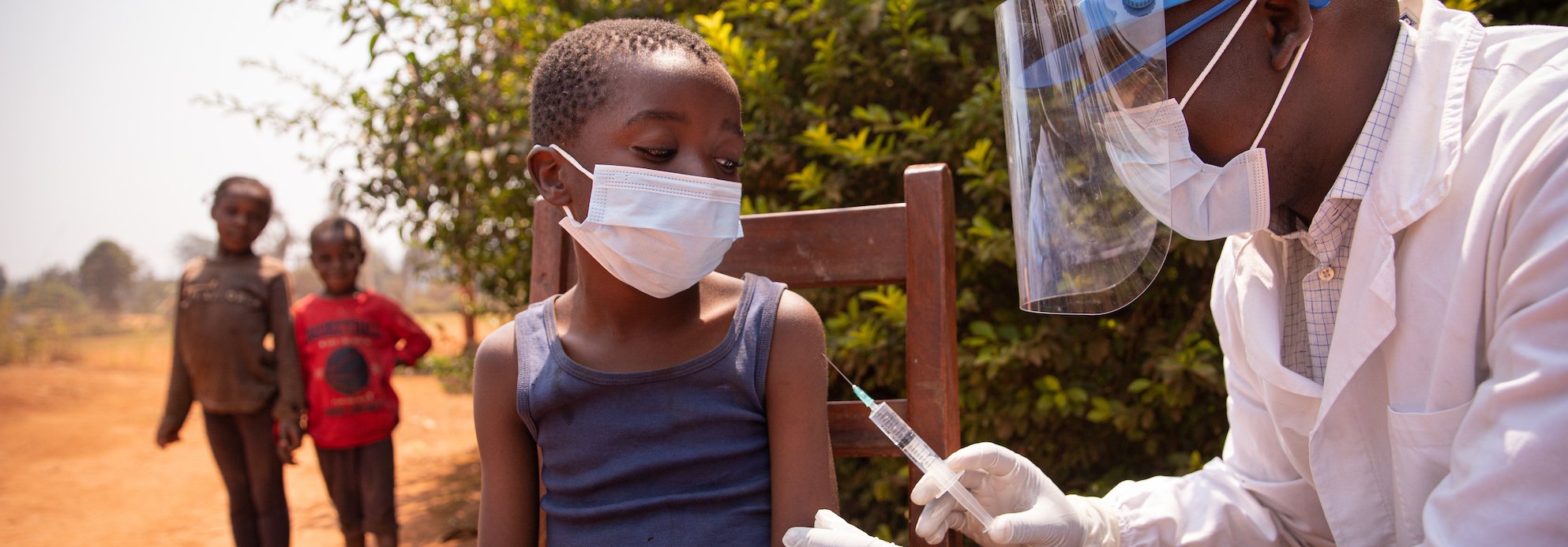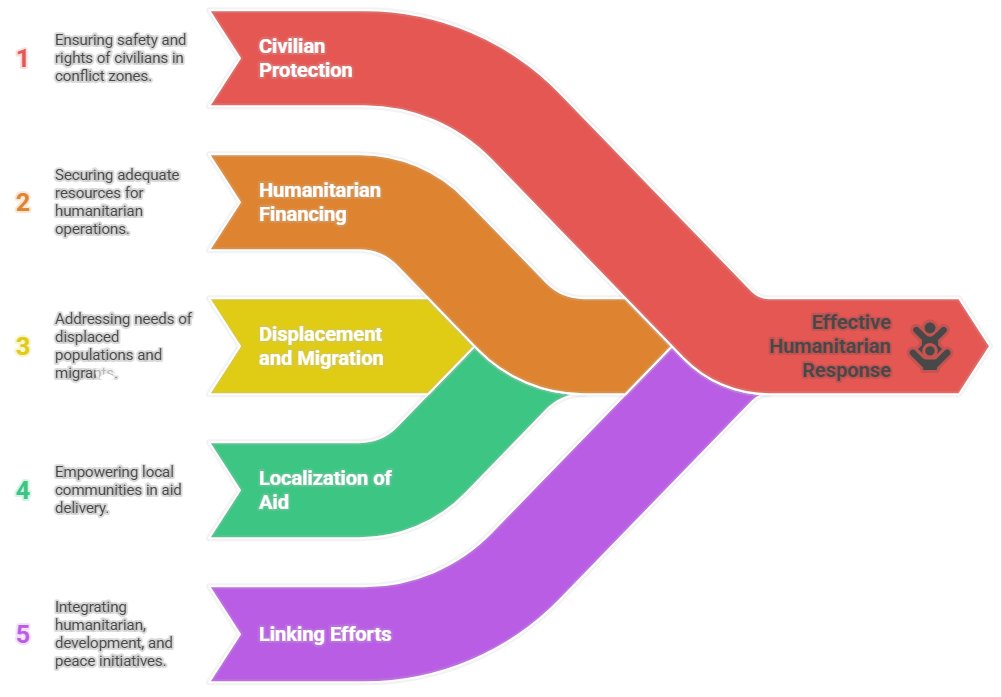
Humanitarian Agenda
This section provides a framework for understanding the Post 2015 Development Agendas.
When the Millennium Development Goals (MDGs) ended in 2015, the international community came together once again, under the auspices of the United Nations, to formulate a development agenda for adoption beyond 2015.
These six agendas (which go beyond just the SDGs) together became known as the "Post-2015 Agendas"
The Humanitarian Agenda seeks to protect lives, dignity, and rights of people affected by crises through principled humanitarian action that is impartial, neutral, and needs-driven. It promotes stronger links between humanitarian aid, development, and peacebuilding to address root causes and foster long-term recovery.

Main Thematic Areas:
- Protection of civilians in conflict
- Humanitarian financing
- Forced displacement and migration
- Localization of aid
- Linking humanitarian, development, and peace efforts
The Humanitarian Agenda seeks to protect civilians affected by conflicts and disasters, ensure adequate and predictable humanitarian financing, and improve the delivery of aid through localization and better coordination with development and peacebuilding initiatives. Key themes include addressing forced displacement, promoting the dignity and rights of affected populations, and fostering greater inclusion of local actors in humanitarian responses. The agenda stresses the need for coherence across humanitarian, development, and peace efforts to achieve lasting solutions.

Facts and Figures:
- In 2024, over 363 million people are estimated to need humanitarian assistance (OCHA).
- The Global Humanitarian Overview for 2024 calls for $46 billion in funding.
- 70 million people were forcibly displaced globally by conflict and persecution as of 2023 (UNHCR).
- Only 25% of funding needs were met for humanitarian appeals in 2023.
- The "Grand Bargain" initiative aims to give 25% of humanitarian funding directly to local actors by 2025.
- Every 4 seconds, one person is forcibly displaced from their home due to conflict, persecution, or disasters, according to UNHCR data.
- Agenda for Humanity: Developed for the World Humanitarian Summit in 2016, it calls for transformative changes to end humanitarian suffering and outlines five core responsibilities for action.
- World Humanitarian Summit Outcomes: The Summit produced commitments to enhance humanitarian effectiveness, invest in local capacities, and strengthen the links between humanitarian, development, and peace efforts.
- Central Emergency Response Fund (CERF): A global fund managed by OCHA that provides immediate financial resources for rapid humanitarian response to sudden-onset and underfunded emergencies.
- Grand Bargain Commitments: A set of reforms agreed upon between donors and aid organizations to make humanitarian aid more effective and efficient, including commitments to more funding for local responders.
- Agenda for Humanity
- World Humanitarian Summit Outcomes
- Central Emergency Response Fund (CERF)
- Grand Bargain Commitments
| Medecins Sans Fronti?res (Doctors Without Borders) (Global): MSF delivers emergency medical care in conflict zones and during natural disasters, focusing on impartial assistance based on need alone, a core humanitarian principle. | International Rescue Committee (IRC) (Global): The IRC provides lifesaving support to refugees and internally displaced persons, while also working on longer-term solutions through livelihood and education programs. | Local to Global Protection Initiative (Africa and Asia): This NGO coalition works to strengthen local capacities in humanitarian response, advocating for the localization commitments under the Grand Bargain. |
| Cash-Based Transfers by WFP (Multiple Regions): The World Food Programmefs use of mobile cash transfers empowers displaced people with choice while improving transparency and efficiency in humanitarian aid. | Refugee-Led Organizations (Kenya, Uganda): Groups like YARID and RLOs provide grassroots services such as education, psychosocial support, and livelihoods in refugee communities, promoting localization. | Pompiers Sans Frontieres (France and Global South): This NGO supports emergency preparedness and response capacity-building for local fire and disaster response units in low-resource settings. |
GDRC Research Output |
|